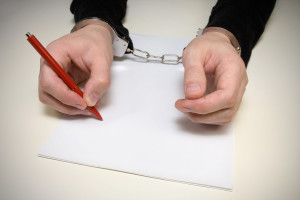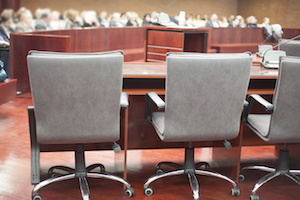Two expert witnesses clashed over the validity of a suspect’s confession during a murder trial in New Jersey. Prosecutors and defense attorneys presented psychology expert witnesses to debate whether or not police coerced a false confession out of suspect David Granskie Jr. during the investigation into the death of his father’s girlfriend, Carolyn Stone.
Defense Calls False Confession Expert Witness
On May 24th, 2009, Carolyn Stone was murdered during a Memorial Day event at the home of her boyfriend, David Granskie Sr. Although suspect Gary Wilson immediately confessed to murdering Stone using a cinder block without assistance or involvement of accomplices, Granskie Jr. was investigated for participating rape and suggesting that the victim be murdered in order to cover up the crime. While being detained by police Granskie was videotaped admitting that he was part of the sexual assault and present for Stone’s murder, and with his confession as a centerpiece, prosecutors developed and pursued a murder case against Granskie that finally came to court last September.
Defense attorneys for Granskie targeted the validity of the confession by calling Dr. Clarence Watson, a psychologist expert witness who specializes in identifying false confessions coerced during aggressive police interrogation. Dr. Watson testified that Granskie’s admission was not legitimate due to the defendant’s battle with heroin withdrawal. Saying that Granskie’s struggle with addiction created significant anxiety and stress, Watson claimed that the defendant simply wanted to accommodate police officers by telling them what they wanted to hear.
Calling the information in the confession “contaminated” by the police’s use of pressure and leading questions that directed Granskie to the answers that would implicate him in Stone’s death, Dr. Watson expressed doubt that the admission of guilt was genuine. During his expert testimony, Watson pointed out several examples of pressure tactics, including:
- When Granskie said he didn’t know how many times Stone was hit with the cinder block, police forced him to provide a number. When Granskie responded incorrectly with “10”, police accused him of lying.
- In several situations where Granskie responded with “I think,” or “I don’t know,” or another vague answer, police would not relent and continue to pressure him until he provided a definitive answer that fit their theory of the crime.
- When Granskie claimed he did not rape Stone, police told him that he did, and, after several suggestions that he engaged in sexual intercourse with Stone and then moved her body to the site of the murder, Granskie relented and agreed.
Dr. Watson reinforced his theory that Granksie’s confession was coerced by pointing to signs of heroin withdrawal throughout the interrogation. Granskie was fidgety and showed signs of bulging veins that Watson argued should have tipped police off to a vulnerable condition. Dr. Watson’s expert testimony concluded by telling jurors that in his opinion Granskie was pressured into a false confession, striking a blow to the prosecution’s key evidence in the case.
Prosecutors Call False Confession Rebuttal Expert Witness
To rebut the testimony of Dr. Watson, prosecutors called a false confession expert witness of their own: Dr. Louis Schlesinger. Contrary to Watson’s claim that Granskie’s admission was the result of police pressure, Dr. Schlesinger argued that there was no evidence that suggested the police took improper action or that Granskie’s confession was invalid. Schlesinger attacked Watson’s expert testimony on four key points:
- Granskie Jr. was not suffering from symptoms of heroin withdrawal: During his testimony, Dr. Watson pointed to physical symptoms of heroin withdrawal that Granskie appeared to be suffering, but Dr. Schlesinger countered that none of those symptoms reached the level of “clinically significant distress.” While Granskie displayed some minor discomfort, Schlesinger attributed his demeanor and mannerisms to the stress anyone accused of murder would display.
- Granskie did not use heroin two days before the murder: key to Watson’s claim that Granskie’s heroin withdrawal influenced his confession is the time of the defendant’s last use of the drug. According to Schlesinger, Granskie did not use heroin immediately before the murder or the subsequent investigation.
- Granskie did not ask to be released after the interrogation was over: When the confession ended, Granskie simply asked for a cigarette rather than request his release. According to Schlesinger’s expert testimony, this behavior indicates the defendant was not simply appeasing police in hopes of being allowed to go home.
- False confessions are usually only made for people who fall into three categories: Dr. Schlesinger pointed to research that suggests only mentally retarded, juvenile, and mentally ill defendants are prone to making false confessions during police interrogation, and argued that since Granskie didn’t fall into any of those, it is unlikely he was pressured into a lie.
Defense attorneys objected to Schlesinger’s testimony because he was improperly primed about the content of Dr. Watson’s argument prior to taking the stand, but the trial judge allowed the prosecution to proceed providing that jurors would be informed of the tampering. Granskie’s trial is expected to wrap up within the next week, and with the confession central to the evidence, significant importance will be placed on the dueling testimony of the psychology expert witnesses who debated its validity.











